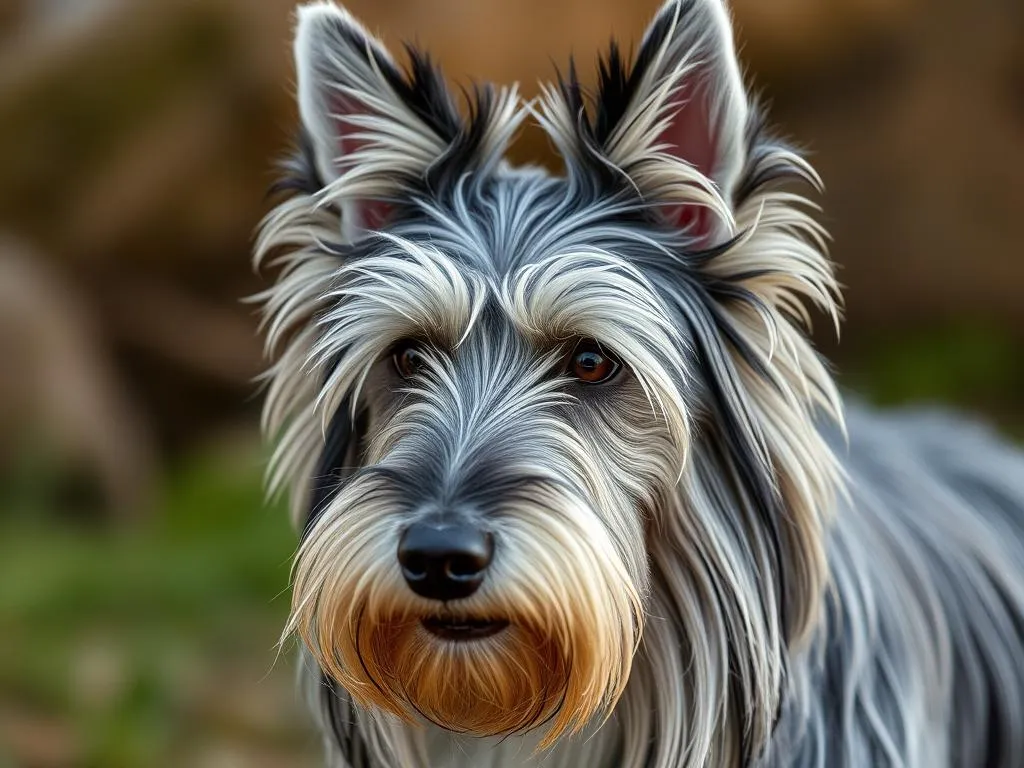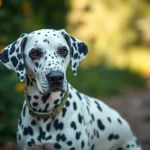
Introduction
Dog breeds come in a stunning variety of shapes, sizes, and temperaments, each with unique characteristics that make them special companions. Understanding these characteristics is crucial for potential dog owners to ensure a harmonious match between lifestyle and canine needs. Among the many breeds, the Skye Terrier stands out with its rich history and distinctive appearance. This breed, originally from the Isle of Skye in Scotland, has captured hearts for centuries.
History of the Skye Terrier
Origins
The Skye Terrier traces its roots to the rugged landscapes of the Isle of Skye, where it was bred to hunt vermin and protect livestock. This breed is believed to have descended from the now-extinct “Tweed Water Terrier” and other terrier breeds brought to the island by settlers. The Skye Terrier was particularly favored for its ability to navigate the rocky terrain and its agility in hunting small game.
Historical Significance
The Skye Terrier has played a significant role in Scottish culture and folklore. These dogs were not just working companions; they were also woven into the fabric of local stories and traditions. The breed gained notable popularity in the 19th century, particularly among the British aristocracy. Queen Victoria was a prominent admirer, famously owning several Skye Terriers, which helped elevate their status. The breed became a symbol of loyalty and companionship in Scottish households.
Physical Characteristics
Size and Build
The Skye Terrier is a medium-sized breed, typically standing between 9 to 10 inches tall at the shoulder and weighing around 35 to 45 pounds. Their long, low-slung bodies are characterized by a robust build, with a deep chest and well-developed musculature. The overall appearance reflects strength and agility, making them excellent hunters.
Coat and Color
One of the most distinctive features of the Skye Terrier is its luxurious double coat, which consists of a soft undercoat and a longer, harsher outer coat. This combination not only provides protection from the elements but also gives the breed its unique flowing appearance. Common colors include:
- Black
- Blue
- Cream
- Gray
- Fawn
Regular grooming is essential to maintain coat health and prevent matting. Brushing at least once a week is recommended, along with occasional baths to keep the fur clean and fresh.
Temperament and Behavior
General Temperament
The Skye Terrier is known for its spirited and affectionate nature. They are intelligent dogs that thrive on companionship and interaction with their families. While they possess a strong independent streak typical of terriers, they are also eager to please, making them relatively easy to train with the right approach.
Social Behavior
When well-socialized, the Skye Terrier can be friendly and playful with children and other pets. They are naturally protective, making them excellent watchdogs. Their loyalty to their family is unwavering, and they often form strong bonds with their owners. However, this protective instinct can sometimes lead to wariness of strangers, so early socialization is crucial.
Training Needs
Training a Skye Terrier requires consistency and patience. Positive reinforcement methods work best, as these dogs respond well to praise and rewards. Common behavioral challenges include stubbornness and a tendency to bark, which can be managed through early training and socialization. Engaging them in activities that stimulate their minds, such as puzzle toys or agility courses, can also help channel their energy positively.
Health and Care
Common Health Issues
Like many breeds, the Skye Terrier is predisposed to certain health issues. Some of the most common concerns include:
- Hip Dysplasia: A genetic condition that can affect mobility.
- Patellar Luxation: A condition where the kneecap dislocates, causing discomfort.
- Progressive Retinal Atrophy (PRA): A degenerative eye disorder that can lead to blindness.
Regular veterinary check-ups and a good understanding of potential health issues can help manage these conditions effectively.
Nutrition
Providing a balanced diet is essential for the overall health of the Skye Terrier. High-quality dog food formulated for their size and energy level is recommended. Portion control is crucial to avoid obesity, as these dogs can be prone to weight gain. A feeding schedule that provides meals twice a day is often beneficial.
Grooming Requirements
Grooming a Skye Terrier is a significant aspect of their care. Their long coat requires regular brushing at least once a week to prevent tangles and mats. Bathing should be done as needed, typically every few months, or when the coat appears dirty. Essential grooming tools include:
- Slicker Brush: For detangling.
- Comb: For finishing touches.
- Dog Shampoo: Specifically formulated for long-haired breeds.
Regular ear cleaning and nail trimming are also important to maintain overall health.
Living with a Skye Terrier
Ideal Living Conditions
The Skye Terrier can adapt well to various living conditions, but they do best in homes where they have enough space to move around. While they can thrive in apartments, having access to a yard where they can play and explore is ideal. Regular walks and playtime are critical to keeping them physically fit and mentally stimulated.
Compatibility with Families
This breed is suitable for various family dynamics, including singles, couples, and families with children. Their affectionate nature makes them great companions, and they are known to be gentle with kids. However, families with smaller pets should introduce them carefully, as the Skye Terrier‘s hunting instincts might kick in.
How to Choose a Skye Terrier
Finding a Reputable Breeder
When looking for a Skye Terrier puppy, finding a reputable breeder is crucial. Here are some key questions to ask:
- What health tests have been performed on the parents?
- Can you provide references from previous puppy buyers?
- What socialization methods do you use for the puppies?
Red flags to watch out for include a lack of transparency about health testing, unwillingness to meet the puppies’ parents, or conditions that appear unsanitary.
Adoption Considerations
Adopting a Skye Terrier from a shelter or rescue can be a rewarding experience. While there may be unknowns regarding their history, many dogs in shelters are loving and eager for a second chance. Consider the following pros and cons:
Pros:
– Saving a life and providing a home.
– Potentially lower adoption fees compared to buying from breeders.
Cons:
– Possible behavioral issues that may require extra training.
– Uncertainty about the dog’s health background.
Research local rescues or shelters that specialize in or have experience with terrier breeds for the best chance of finding a Skye Terrier.
Fun Facts and Trivia
Unique Traits of the Breed
The Skye Terrier is known for its quirky behaviors, including its distinctive way of playing and its tendency to be somewhat aloof with strangers. They often enjoy a good game of fetch but prefer to engage in activities that involve their families.
Cultural References
The Skye Terrier has appeared in various media, including literature and films. Notably, the breed has been depicted in artistic works and has been featured in stories that highlight its loyal and protective nature. Their association with prominent figures, like Queen Victoria, has also solidified their place in popular culture.
Conclusion
The Skye Terrier is a breed rich in history and character, making it an excellent companion for those who appreciate its unique traits. With proper care, training, and socialization, these dogs can thrive in various environments, providing loyalty and affection to their families. Whether through adoption or purchasing from a reputable breeder, welcoming a Skye Terrier into your home can be a rewarding experience.









